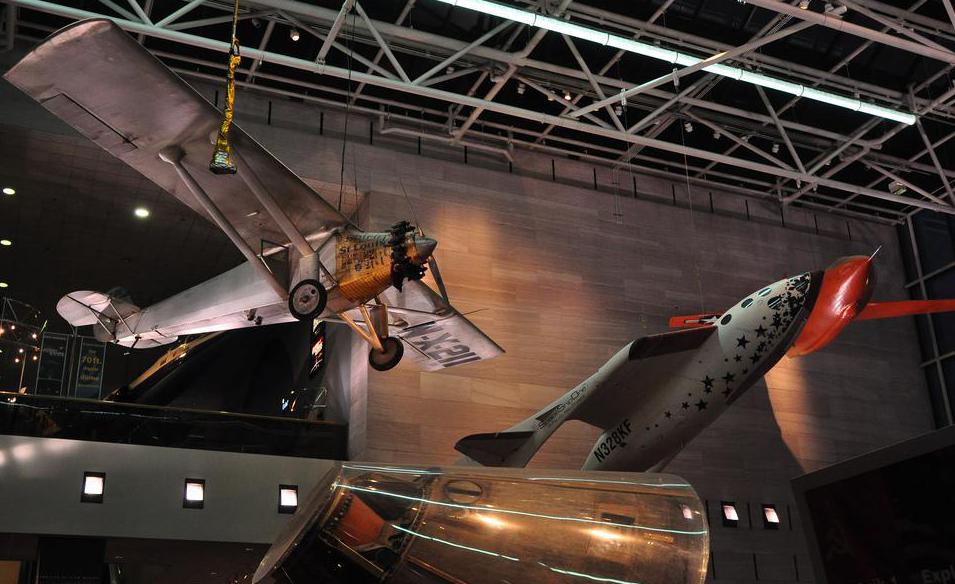At WiseGEEK, we're committed to delivering accurate, trustworthy information. Our expert-authored content is rigorously fact-checked and sourced from credible authorities. Discover how we uphold the highest standards in providing you with reliable knowledge.
What is SpaceShipOne?
SpaceShipOne is a 3-passenger spaceplane developed by the California company Scaled Composites in 2003. In 2004, it achieved world fame by flying the world's first privately funded spaceflights and winning the $10 million US Dollars (USD) Ansari X Prize for its creators. The Ansari X Prize was created to award the first privately-funded team to build a vehicle that could reach 100 km (62 mi) in altitude twice in a two-week period with the equivalent of three people on board, with no more than ten percent of the non-fuel weight of the spacecraft replaced between flights.
SpaceShipOne has achieved multiple suborbital space flights. This is a flight that reaches the altitude of the international definition for the boundary of space (the Kármán line), but does not come close to achieving a stable orbit around the Earth, like a Space Shuttle or the International Space Station. Launching a spacecraft on an orbital trajectory requires 60 times more energy than a suborbital trajectory. Launching a spacecraft from a low Earth orbit to a more distant geosynchronous orbit, like GPS satellites, requires more energy still.

Unlike conventional rockets, SpaceShipOne is lifted by a carrier craft, WhiteKnight, to approximately 14 km (8.6 mi) above the surface. Here, the craft is already beyond 90% of the Earth's atmosphere. A hybrid rocket engine is engaged, and the craft accelerates from subsonic speeds all the way up to Mach 3, climbing an additional 86 km (53 mi) to reach the "edge of space." The engine uses liquid oxygen as an oxidizer and synthetic rubber as the fuel.
SpaceShipOne featured a "feathering" tail which spread out after the craft reaches its apex, allowing it to slowly glide down to Earth. Capable of flying both at the edge of space and at lower altitudes, SpaceShipOne is considered a spaceplane, like its more expensive cousin the Space Shuttle. Speaking of costs, SpaceShipOne cost only about $25 million USD to develop, while the Space Shuttle program cost over $180 billion USD. Admittedly the Space Shuttle has far greater capabilities, but the 1:7200 cost difference is still striking.
SpaceShipOne is being followed up by SpaceShipTwo, a more powerful and larger spaceplane built in collaboration with Virgin Galactic. SpaceShipTwo will be used for space tourism starting in 2009. Suborbital flights are expected to cost roughly $100,000 USD per passenger. If SpaceShipTwo goes well, it will be followed up by SpaceShipThree, which could be the first commercial craft to achieve orbital spaceflight.
AS FEATURED ON:
AS FEATURED ON:











Discussion Comments
@irontoenail - The vast distances involved between Earth and other planets are more difficult to traverse than most people realize though. Mars is many times further away than the moon and SpaceShipOne isn't even designed to get into orbit, let alone reach the moon.
Yes it's a step forward, but not a big one. I wouldn't hold my breath concerning those Mars colonies.
@KoiwiGal - SpaceShipOne and others like her are definitely a step in the right direction. Governments don't tend to do things without a driving force behind them and since the cold war ended they haven't had a good one.
Space tourism is definitely a good starting point and if it's successful then I'm sure other companies will spring up. More than that, I'm hoping the technology boom that could be driven by that industry will lead to other interests in space jumping onboard, like mining companies searching for ore on asteroids or solar companies rigging power arrays in the void.
Remember that we managed to go from making machines capable of any flight to reaching the moon in less than one hundred years and we did it without any of the sophisticated computers we have today. I think if real money got behind this we'd be able to go to Mars for vacations within a generation.
I am really hopeful that the cost of going into space is going to come down to the point where I can afford it before I get too old to go into space. Being able to see the curve of the Earth and experience weightlessness would be such an amazing thing.
I was always disappointed when I was a kid to finish reading a science fiction novel and realize we weren't even close to being able to wander around in space at will.
I might never be able to travel between solar systems, but reaching the edge of our atmosphere would be much better than nothing.
Post your comments